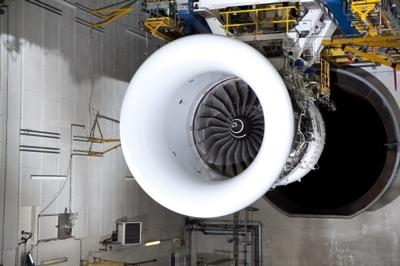Thu, Sep 16, 2021
AD 2021-17-11 Requires Initial And Repetitive Borescope Inspections (BSIs) Of The Affected IPC R1 Blades
The FAA is adopting a new airworthiness directive (AD) for certain Rolls-Royce Deutschland Ltd & Co KG (RRD) Trent XWB-75, Trent XWB-79, Trent XWB-79B, and Trent XWB-84 model turbofan engines.

This AD was prompted by reports of cracks in the intermediatepressure compressor (IPC) rotor 1 (R1) blades installed on certain Trent XWB model turbofan engines. This AD requires initial and repetitive borescope inspections (BSIs) of the affected IPC R1 blades and, depending on the results of the inspections, replacement of all 34 IPC R1 blades. The FAA is issuing this AD to address the unsafe condition on these products. This AD is effective October 12, 2021.
Supplementary Information: The FAA issued a notice of proposed rulemaking (NPRM) to amend 14 CFR part 39 by adding an AD that would apply to certain RRD Trent XWB-75, Trent XWB-79, Trent XWB-79B, and Trent XWB-84 model turbofan engines. The NPRM published in the Federal Register on May 28, 2021 (86 FR 28716). The NPRM was prompted by reports of cracks in the IPC R1 blades installed on certain Trent XWB model turbofan engines. The NPRM proposed to require initial and repetitive BSIs of the affected IPC R1 blades and, depending on the results of the inspections, replacement of all 34 IPC R1 blades with parts eligible for installation. The FAA is issuing this AD to address the unsafe condition on these products.
The European Union Aviation Safety Agency (EASA), which is the Technical Agent for the Member States of the European Community, has issued EASA AD 2020-0277, dated December 11, 2020 (referred to after this as “the MCAI”), to address the unsafe condition on these products. The MCAI states:
- Occurrences have been reported of finding cracked IPC R1 blades on certain Trent XWB engines that were close to their first planned refurbishment shop visit.
- This condition, if not corrected, could lead to blade failure and consequent engine inflight shut-down (IFSD), possibly resulting in reduced control of the aeroplane.
- To address this potential unsafe condition and avoid dual engine IFSD, Rolls-Royce issued the inspection NMSB to provide inspection instructions and the NMSB to provide information on threshold and intervals.
- For the reasons described above, this [EASA] AD requires repetitive inspections of the affected parts and, depending on findings, accomplishment of applicable corrective action(s).
You may obtain further information by examining the MCAI in the AD docket at www.regulations.gov by searching for and locating Docket No. FAA-2021-0381.
More News
Ultrahigh Frequency (UHF) The frequency band between 300 and 3,000 MHz. The bank of radio frequencies used for military air/ground voice communications. In some instances this may >[...]
During The 7 Second Descent, There Was Another TAWS Alert At Which Time The Engine Remained At Full Power On October 24, 2025 at 2115 mountain daylight time, a Cirrus SR22T, N740TS>[...]
From 2009 (YouTube Edition): Educational Organization Aims to Inspire by Sharing Tuskegee Story Founding leader Don Hinz summarized the Red Tail Project’s mission in simple, >[...]
“This feels like an important step since space travel for people with disabilities is still in its very early days... I’m so thankful and hope it inspires a change in m>[...]
Also: New Katanas, Kern County FD Training, IndiGo’s Botched Roster, MGen. Leavitt Named ERAU Dean The Australian Transportation Safety Bureau (ATSB) has wrapped up its inves>[...]
 ANN's Daily Aero-Term (12.19.25): Ultrahigh Frequency (UHF)
ANN's Daily Aero-Term (12.19.25): Ultrahigh Frequency (UHF) NTSB Prelim: Cirrus Design Corp SR22T
NTSB Prelim: Cirrus Design Corp SR22T Classic Aero-TV: The Red Tail Project--Carrying the Torch of the Tuskegee Airmen
Classic Aero-TV: The Red Tail Project--Carrying the Torch of the Tuskegee Airmen Aero-News: Quote of the Day (12.19.25)
Aero-News: Quote of the Day (12.19.25) Airborne 12.17.25: Skydiver Hooks Tail, Cooper Rotax Mount, NTSB v NDAA
Airborne 12.17.25: Skydiver Hooks Tail, Cooper Rotax Mount, NTSB v NDAA



